From Ice 🧊 to ICE ⛽ to Something Nice ⚡
The History and Evolution of Convenience Stores and the Refueling Industry in America
It’s not typically how most people think about it, but if you work in the EV charging industry you really work in the car refueling industry, and the car refueling industry is dominated by convenience stores.
NACS, the convenience store industry group, shared data showing that convenience stores sold 80% of fuel purchased in the US in 2023, a whopping $532 billion.
Today we will travel back to the very beginning days of convenience stores almost 100 years ago, tracing their evolution, the unification of convenience stores and gas stations, and looking ahead to what the future of EV charging has in store for the convenience store industry.
Early Beginnings: The Dawn of Convenience
Convenience stores are a fixture of the American landscape. Their story begins in the early 20th century when small grocery stores began offering a selection of everyday items outside of just produce to cater to the busy lifestyles of an increasingly urban population. The first known convenience store, the Southland Ice Company in Dallas, Texas, started selling milk, bread, and other essentials alongside its primary product, ice, in 1927.
Photo from 7-Eleven’s website of their first convenience store in Dallas, Texas
This store, which rebranded to 7-Eleven in 1946, marked the beginning of a new retail format focused on quick service and accessibility. Interestingly, the '7' and 'Eleven' in the name referred to the store's operating hours: 7 am to 11 pm, seven days a week - a significant departure from normal business operating hours at the time.
This new retail format prioritized several key factors:
Accessibility - locations were chosen for their proximity to residential / high-traffic areas
Extended operating hours - many stores were open late into the night or 24/7
Quick service - a limited selection of products allowed for faster shopping trips
Immediate consumption - focus on ready-to-eat foods/drinks for on-the-go customers
Post-War Expansion: The Growth of Suburbia
The end of World War II brought significant changes to American society. The explosive growth of the automobile and the expansion of suburban areas created demand for easily accessible retail stores. Convenience stores met this need by offering a wide range of products, extended hours, and locations near residential areas. During this period, the concept of self-service also became popular, allowing customers to browse and select products without the assistance of store clerks.
The rise of convenience stores not only transformed the retail landscape but also reflected broader societal changes in America. These stores became more than just places to buy essentials; they evolved into community hubs, offering services like ATMs, lottery tickets, and eventually, prepared foods and fuel pumps.
The Birth of the Modern Gas Station
Parallel to the growth of convenience stores was the evolution of the refueling industry. Early gas stations, often referred to as filling stations, emerged in the 1910s. Prior to this, motorists typically bought gasoline in bulk from grocery stores, blacksmith shops, or even pharmacies. These early fuel vendors would store gasoline in large drums and use funnels to pour it into vehicles, a process that was both inefficient and dangerous.
The first purpose-built gas station is widely considered to be the one opened by Gulf Refining Company in Pittsburgh, Pennsylvania, in 1913. This station featured a pagoda-style design and offered free air, water, crankcase service, and a lighted sign to attract nighttime customers. Initially, this and similar stations were simple structures with hand-operated pumps. Attendants would manually pump fuel into a glass cylinder marked with volume measurements, then gravity would feed the fuel into the vehicle's tank. This method, while an improvement over barrel and funnel, was still time-consuming and labor-intensive.
Example of a Texaco refueling station with a glass cylinder gas pump and attendant
The rapid increase in automobile ownership pushed towards more efficient refueling solutions. By the 1920s, purpose-built gas stations began appearing, offering not only fuel but also oil, tires, and other automotive services. By 1920, there were about 15,000 filling stations in the U.S. This number exploded to 100,000 by 1930, reflecting the dramatic rise in car ownership during this period. In fact, by 1929, there was one car for every five Americans, a ratio that would continue to increase in the following decades.
History of gas pumps from 1885 through the 1950’s (source)
Several key innovations transformed the gas station during this period:
Electric pumps: Introduced in the mid-1920s, these greatly increased the speed and ease of refueling.
Visible gas pumps: These allowed customers to see the fuel as it was pumped, increasing trust in the measurement.
Computing pumps: Introduced in the late 1930s, these calculated the total cost of fuel dispensed.
Self-serve stations: While not widespread until the 1970s, the first self-serve station opened in Los Angeles in 1947.
By the 1920s, purpose-built gas stations began appearing in earnest, offering not only fuel but also oil, tires, and other automotive services. These stations often featured distinctive architectural designs to attract customers. Companies like Shell, Texaco, and Phillips 66 developed iconic building styles that made their stations instantly recognizable to passing motorists.
The expansion of services at gas stations mirrored the growing needs of motorists. Many stations began to offer basic mechanical services, windshield cleaning, and even local road maps. This evolution laid the groundwork for the eventual merger of gas stations with convenience stores.
Integration of Fuel and Convenience
The 1960s and 1970s saw the merging of convenience stores and gas stations. Oil companies began to recognize the potential of combining fuel sales with convenience retailing. This integration was driven by several factors, including:
Changing Consumer Habits - the post-war boom in car ownership led to more Americans spending time on the road, creating a demand for quick, accessible options
Economic Pressures - fluctuating fuel prices and increasing competition in the gas station market pushed oil companies to seek additional revenue streams.
Real Estate Utilization - gas stations often occupied prime locations, and adding retail space allowed for better utilization of this valuable real estate
Convenience Store Evolution - convenience stores were looking to expand their offerings and locations, making gas stations an attractive option
Major oil companies like Exxon, Shell, and Chevron started incorporating small retail sections within their gas stations, selling snacks, beverages, and other essentials.
Some key developments during this period include:
7-Eleven's Expansion: In 1964, 7-Eleven began opening stores at gas stations, starting in Texas. By 1972, they had over 1,000 gas station locations.
Circle K's Strategy: Circle K, another major convenience store chain, aggressively pursued a strategy of acquiring gas stations throughout the 1970s.
Oil Company Initiatives: Exxon launched its "Tiger Mart" concept in 1966, while Shell introduced its "Shell Food Mart" in the early 1970s.
Emergence of Hybrid Models: Companies like Wawa and Sheetz began as traditional gas stations but evolved into full-fledged convenience store/gas station hybrids.
A Standard Oil of California station with the distinctive chevron branding, which would later form into Chevron Corporation in 1972 (source)
The Energy Crisis and Market Adaptation
The 1970s energy crisis had a profound impact on both the convenience store and refueling industries. This period of turmoil was primarily triggered by two major events: the 1973 oil embargo imposed by the Organization of Arab Petroleum Exporting Countries (OAPEC) and the 1979 Iranian Revolution.
Images of scarcity, shortages, and government imposed limits on gasoline purchases in the 1970s
With fuel prices skyrocketing and shortages becoming common, gas stations had to adapt to new market conditions. Many stations introduced loyalty programs and promotional offers to retain customers. Convenience stores, on the other hand, diversified their product offerings to include more household goods and groceries, catering to customers who were making fewer trips due to fuel scarcity.
Technological Advancements: The 1980s and 1990s
The 1980s and 1990s brought significant technological advancements to convenience stores and gas stations. The introduction of computerized point-of-sale (POS) systems revolutionized inventory management and customer transactions. Pay-at-the-pump technology, first introduced in the 1980s, allowed customers to refuel their vehicles without entering the store, significantly improving the efficiency of the refueling process.
During this period, the range of products available at convenience stores expanded dramatically. Hot food items, fresh coffee, and a wider selection of groceries became standard offerings. Additionally, convenience stores began partnering with fast food chains, integrating branded food outlets within their premises to attract more customers.
The Rise of Big Chains and Franchising
The late 20th and early 21st centuries saw the rise of large convenience store chains and franchising models. Companies like 7-Eleven, Circle K, and Wawa expanded aggressively, opening thousands of new locations across the country.
Key players and their growth:
7-Eleven - by 1991, the original convenience store had 7,000 locations in North America. As of 2021, it operates over 77,000 stores worldwide, with ~9,500 in the U.S.
Circle K - founded in 1951, Circle K expanded rapidly through acquisitions. In 2003, it was acquired by Alimentation Couche-Tard. By 2021, it had over 7,000 stores in North America
Wawa - starting as a dairy processing plant in 1902, Wawa opened its first convenience store in 1964. By 2021, it had grown to over 900 stores across the East Coast.
Casey's General Stores - founded in 1959, Casey's has become a major player in the Midwest. By 2021, it operated over 2,200 stores.
Factors driving the rise of big chains:
Economies of Scale - larger chains could negotiate better prices with suppliers and implement more efficient distribution systems.
Brand Recognition - national advertising campaigns and consistent branding helped build customer loyalty.
Technological Advancements - big chains had the resources to invest in point-of-sale systems, inventory management software, and customer loyalty programs.
Real Estate Strategy - chains could afford prime locations and often used sophisticated demographic analysis to choose store sites.
Franchising became a popular growth strategy, allowing for rapid expansion while minimizing corporate risk. By 2020, about 60% of convenience stores were operated by franchisees.
Key aspects of franchising in the convenience store industry include:
Standardization - franchising allowed chains to maintain consistent product selections, store layouts, and branding across locations.
Training and Support - franchisors ran comprehensive training programs and provided ongoing operational support to franchisees.
Marketing Power - franchisees benefited from national marketing campaigns and brand recognition.
Quality Control - franchise agreements typically included strict quality control measures to maintain brand standards.
By 2019, the top 10 convenience store chains accounted for over 60% of the market share. Large chains introduced private label products, fresh food offerings, and expanded services like financial services and car washes, driving increased share of wallet for consumers. Many chains also acquired or partnered with fuel retailers, with about 80% of convenience stores selling fuel by 2020.
The Future of Convenience Stores and Refueling
Looking ahead, the convenience store and refueling industries are poised for further evolution. The continued growth of electric vehicles is already causing an increased focus on EV charging infrastructure. Convenience stores will play a crucial role in this transition, providing charging stations and associated amenities for EV drivers.
The growth of electric vehicles is quickly reshaping the refueling landscape. By 2040, EVs are projected to account for about 58% of new passenger vehicle sales globally, and already in some markets EVs account for over 10% of cars on the road.
Convenience stores are increasingly adding EV charging stations. As of 2021, there were over 100,000 public EV charging outlets in the U.S., with many located at convenience stores. Stores are redesigning layouts to accommodate longer dwell times associated with EV charging, introducing features like seating areas and expanded food offerings. EV drivers spend 15-30 minutes charging up at DC fast charging stations, and retailers are increasingly capitalizing on this extended dwell time with additional products and services.
Huge names like Buc-ee’s, Circle K, Wawa, Sheetz, and more are aggressively moving into the EV charging space. Some are pursuing a site host model, where EV charging companies are providing turnkey charging stations and paying site hosts for the use of their parking spaces. Others are choosing to fully invest in EV charging infrastructure, owning and operating these stations to control the brand experience and integrate things like loyalty programs into EV charging operations.
An EV charging station at a Sheetz location outside of Richmond, VA
Conclusion
The history of convenience stores and the refueling industry in America is a window into the broader societal changes over the last 100 years. From their humble beginnings as small grocery outlets and filling stations, these industries have evolved to meet the changing needs of consumers. The union of fuel and convenience dramatically shaped and accelerated their growth, accounting for hundreds of billions of dollars in annual sales in the present day.
Looking forward, the rise of EV charging threatens to again disrupt these two massive industries. Retailers will undoubtedly bring new innovations and strategies to retain and grow market share with this new segment of consumers, ensuring that convenience stores and gas stations remain integral parts of American life.
It was fascinating to learn more about the origin of convenience stores and the history of the American refueling industry. I hope you learned something new and enjoyed reading as much as I enjoyed researching and writing this article!




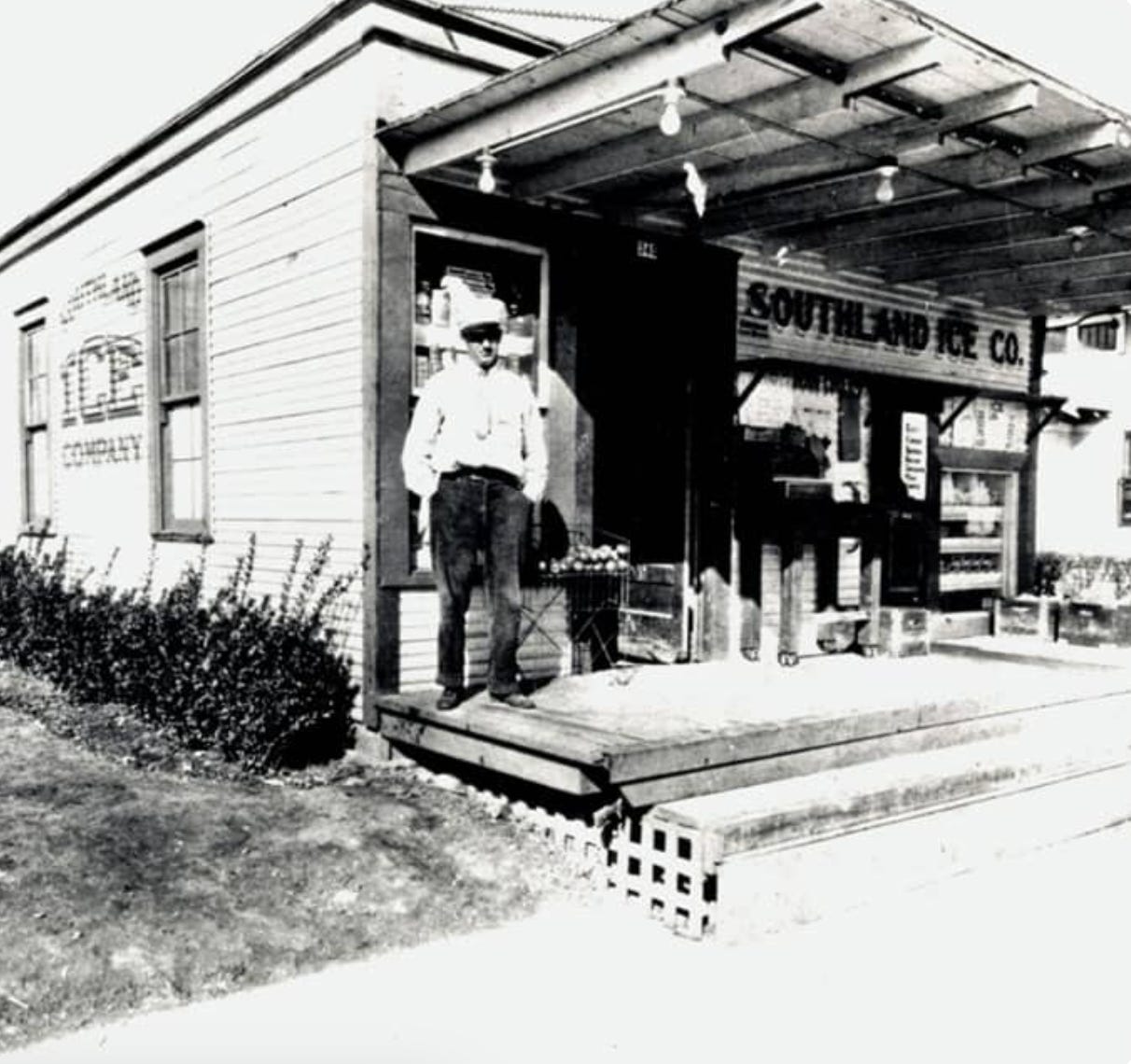
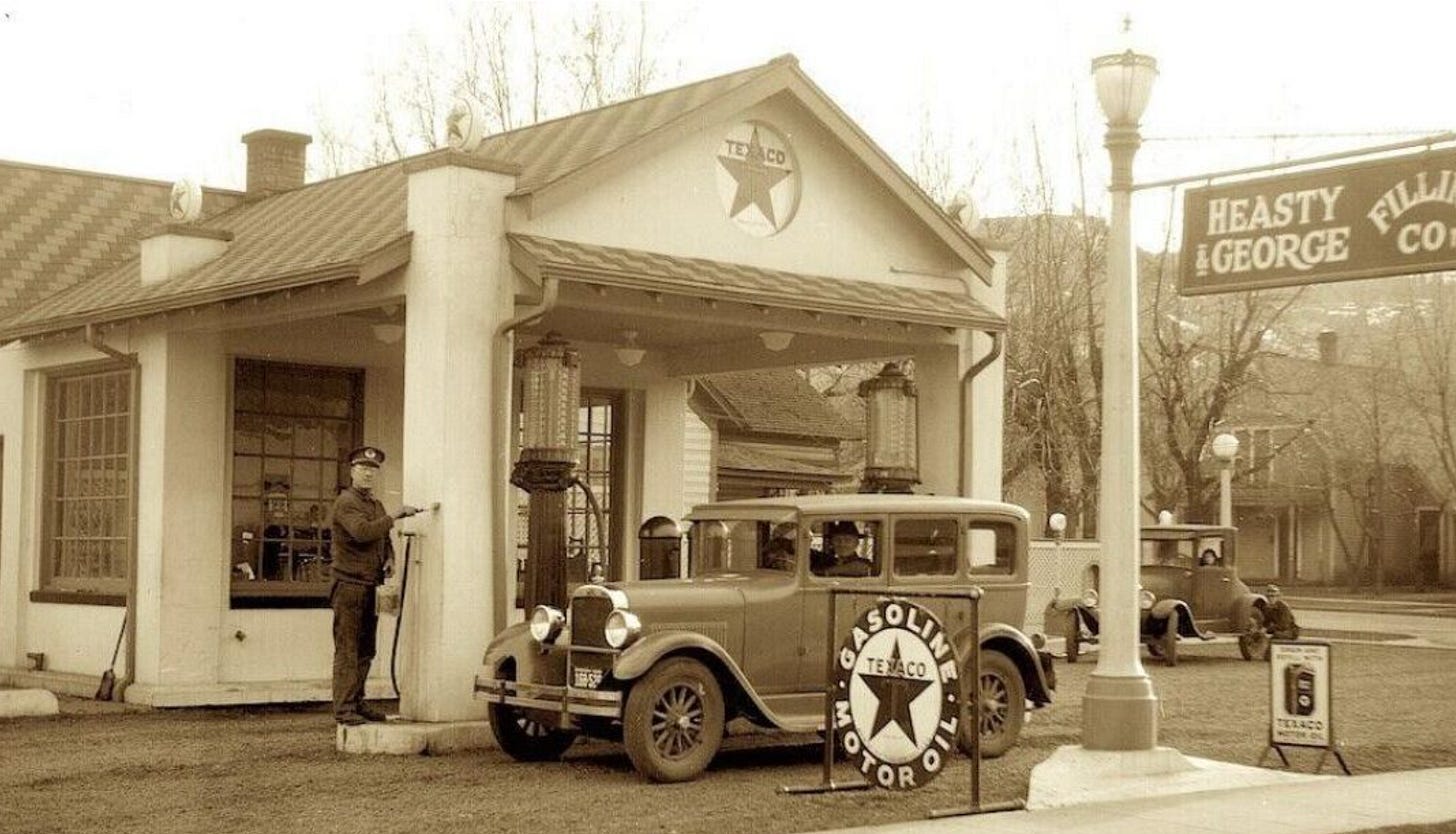
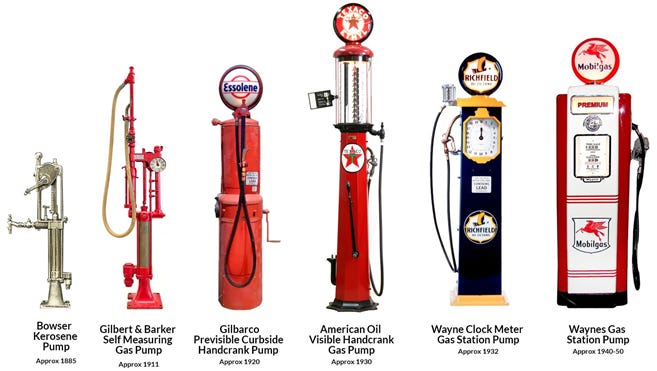
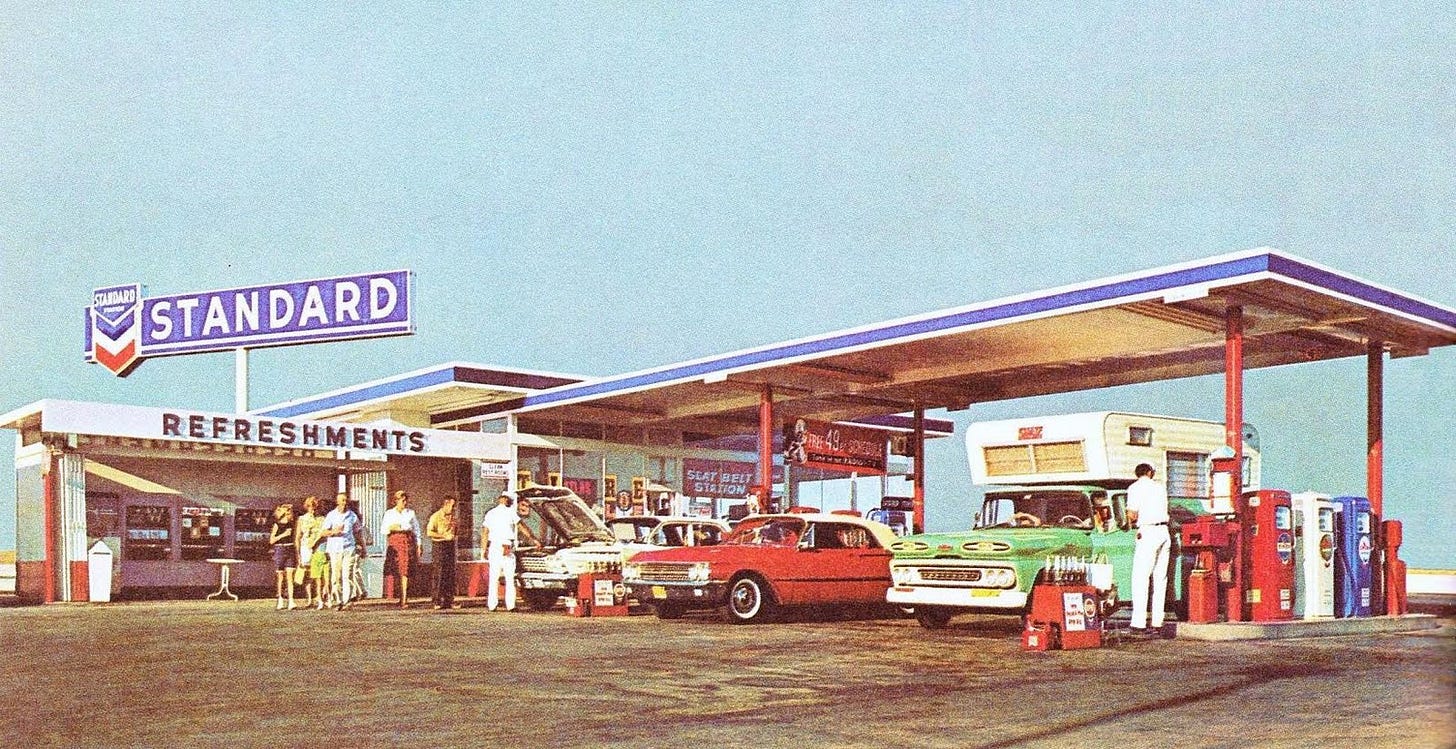
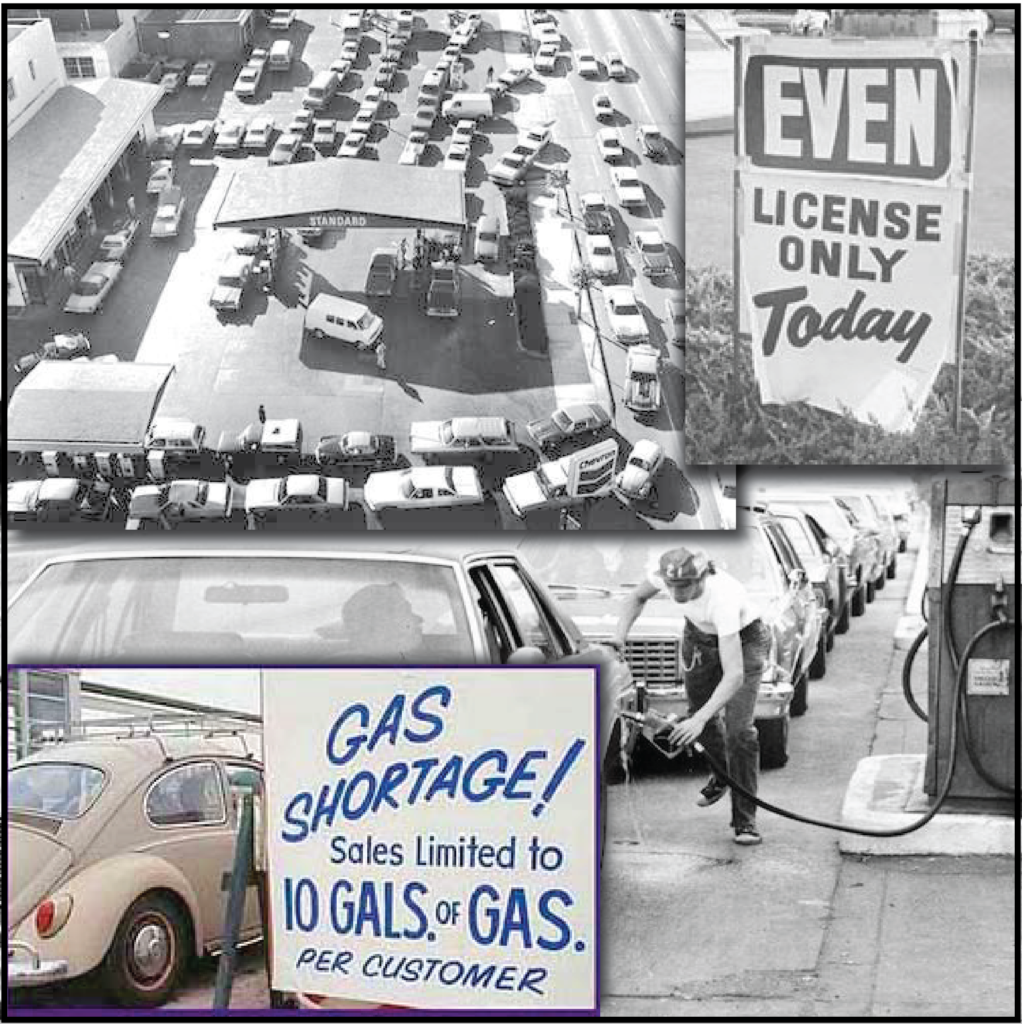
I've been looking for a history of gas stations and convenience stores like this. Great write-up!
Henry Ford put radios in cars and created mass market advertising in the 1920s i wonder if the stores usedittoo?